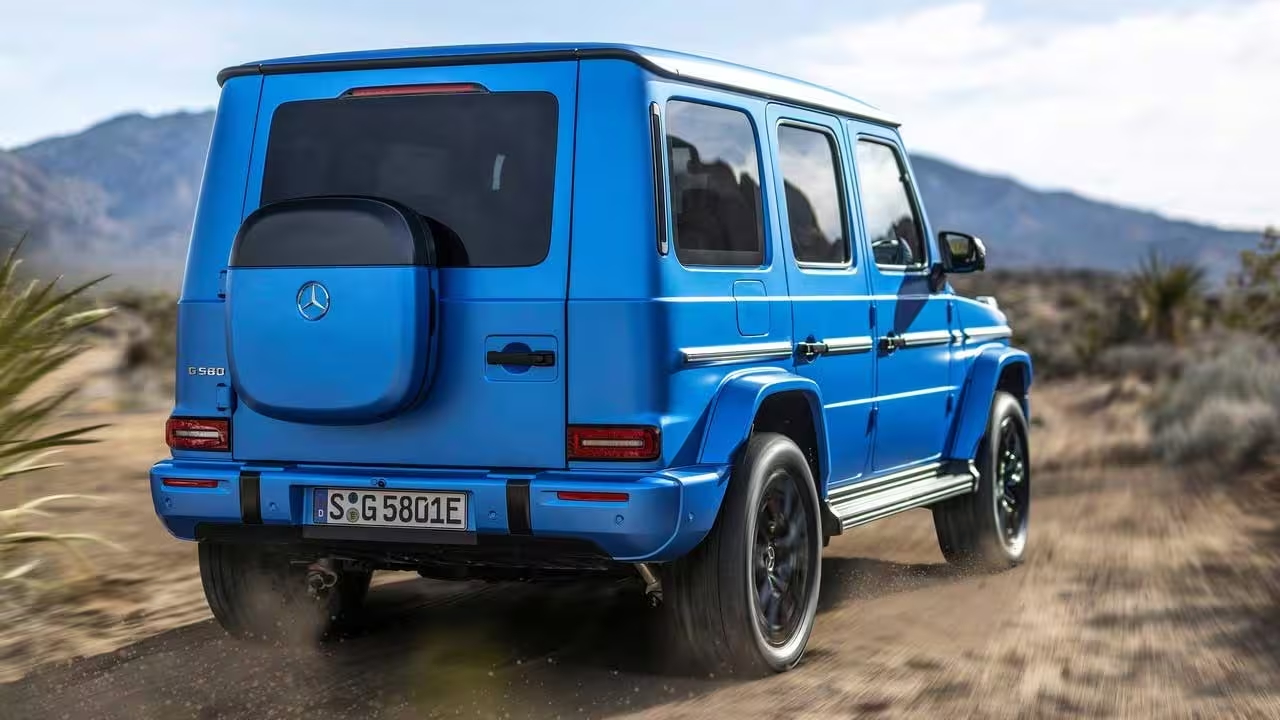4 Minutes
Mercedes-Benz Electric G-Class Struggles in the Market
The highly anticipated Mercedes-Benz G-Class Electric, also known as the EQG or G580, has faced unexpectedly weak demand across global markets. Despite the iconic status of the G-Class among luxury SUVs, the electric version fell short in captivating customers. Since its European launch, sales have reached only 1,450 units, with a further 61 in South Korea and a mere 58 in China, a market typically receptive to electric vehicles. Shockingly, reports indicate that Mercedes hasn’t sold a single unit in the United States, underscoring the magnitude of the challenge.
Design and Performance – Familiar Looks, New Powertrain
While Mercedes-Benz hoped to leverage the G-Class’s legendary design, the electric variant maintains much of the traditional model’s boxy silhouette and rugged appeal. The EQG is powered by advanced electric motors and features the latest in Mercedes-Benz’s EV technology. However, its EPA-rated range is limited to around 385 kilometers (approximately 239 miles) per charge, which raises concerns among buyers who expect more from a high-end electric SUV.
Compared to its gasoline counterpart, the G-Class Electric is significantly heavier, hampering both its towing abilities and off-road credentials. These compromises may be contributing factors to its underwhelming performance in the luxury electric SUV segment.

High Price, Lower Sales
One of the most prominent barriers for the electric G-Class is its hefty price tag. Starting at approximately $161,500, it is among the most expensive SUVs on the market. This premium pricing, without offering a clear advantage over the beloved conventional G-Class, appears to have discouraged potential buyers. In fact, the gasoline-powered G-Class still outsells the electric version by a factor of seven across Europe, reflecting ongoing consumer preference for traditional engines in this segment.
Why Didn’t the Electric G-Class Succeed?
Unlike other electric SUVs that take advantage of their dedicated platforms — offering flat floors, generous interior space, and longer wheelbases — the EQG’s internal proportions remain similar to the original G-Class. As a result, it does not fully benefit from the advantages that electric architecture can offer. Furthermore, luxury SUV enthusiasts are often loyal to the driving dynamics and the prestige associated with large, powerful combustion engines.
Despite recent shifts in consumer tastes toward electric vehicles, the transition is slower among high-end SUV buyers. The latest G550, for example, has already replaced its V8 engine with a six-cylinder inline turbo, but the inclination for performance-oriented, combustion engines among luxury buyers remains strong.

Market Response and Future Plans
In light of the disappointing sales, Mercedes-Benz is reportedly reconsidering its strategy for future electric SUVs, particularly with the upcoming smaller G-Class variant. Industry insiders suggest that the brand is now seriously exploring the possibility of offering this model with internal combustion or plug-in hybrid powertrains, in addition to fully electric options. The planned platform, known as MMA and already utilized for the new CLA, easily supports both electric and combustion engines for added flexibility.
Conclusion: Adaptation in a Changing Market
The Mercedes-Benz Electric G-Class highlights the challenges even premium automakers face in the transition to electrification, especially when adapting iconic models. The experience underscores the need for manufacturers to align EV design, pricing, and positioning with the unique expectations of luxury SUV buyers. As Mercedes pivots its approach, the upcoming generation of G-Class SUVs may blend traditional and advanced powertrains, providing customers with greater choice in an evolving automotive landscape.



Comments